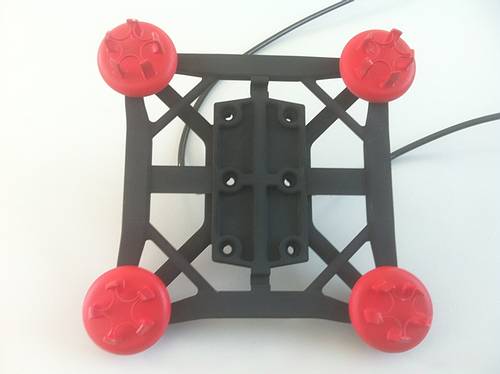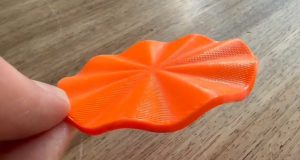EOS, the technology and market leader for design-driven, integrated e-Manufacturing solutions for additive manufacturing, will be presenting the next dimension in manufacturing at this year’s EuroMold in hall 11, booth E148. On the booth, EOS will be demonstrating the application potentials of additive manufacturing for different industries, reflecting the EOS maxims: innovation, quality and sustainable solutions.
This year in Frankfurt, EOS will be showcasing the FORMIGA P 110, the successor of the extremely successful entry-level system FORMIGA P 100, as well as the EOSINT M 280, the latest in metal technology. With the PRECIOUS M 080, EOS is presenting an affordable and compact laser-sintering system which can process precious metal parts made of 18 carat yellow gold and represents a production solution for the jewellery and watch industry. EOS will also be presenting two new plastic materials at the trade fair: Prime Part PLUS and PA 1101. In addition, the company will be providing a first glimpse of the e-Manufacturing platforms currently under development at EOS. These accommodate the requirements EOS has learned about through cooperation with numerous major manufacturing companies and will prepare AM technology for series manufacturing applications of the future. A component produced using this technology will be on display at the booth.
Peter Klink, EVP Sales at EOS, adds: “We are increasingly receiving inquiries from renowned OEMs who are looking into working with EOS technology. We support them with identifying the right applications for use of additive manufacturing, optimizing these applications to match our technology and then finally integrating this manufacturing process in their own process chains. Crucial for use in a manufacturing environment is a highly innovative technology which provides answers where conventional methods reach their limits and which represents consistent and reproducible quality and a sustainable solution for the customer’s challenge. Our additive manufacturing method can fulfil all these criteria.”
AM: trendsetting technology for special-purpose machinery manufacture
Special-purpose machinery manufacture provides impulses for numerous other industries. Subjects such as energy/resource efficiency or constant increase in productivity are just as important for many customers as the wish to produce cost-efficient components in small series down to a batch size of one. Innovative production processes and process optimization are key. Interface components make up around twenty per cent of special purpose machinery: these usually have to be specifically designed in a time-consuming and expensive special process and can often not be operated using standard parts. Rather, they have to be individually adapted to the customer’s working process and machinery, unit quantities are often small. Where laser-sintering is used for design and manufacturing, this technology can fully utilize its advantages compared with conventional design and production processes. Using a gripper application as an example, EOS will be presenting a complete additive manufacturing process chain on the booth: from design through the building process to post-processing. The four-fold ball bearing gripper presented on the booth was produced in close cooperation between companies Kuhnstoff and Wittmann and made in an optimized, laser-sintered lightweight design. As such, the gripper demonstrates three decisive advantages: optimization, economic efficiency and profitability. Optimization is achieved through functional integration, which led to a considerable reduction in the number of components and thus assembly efforts. The technology also permits a high degree of product individualization and comprehensive design possibilities (“design-driven manufacturing”).
Klink concludes: “This laser-sintered gripper is extremely light at only 210 g (≠ conventional model 1,500 g). The reduction in weight achieved by the lightweight design leads to savings in both costs and materials, thus increasing economic efficiency and productivity. The design saves time and money in production and at the customers, increasing profitability. Since production is on the basis of 3D CAD data, special wishes expressed by the end customers can be implemented tailor-made, faster and at significantly lower production costs.”
Subscribe to our Newsletter
3DPResso is a weekly newsletter that links to the most exciting global stories from the 3D printing and additive manufacturing industry.
























